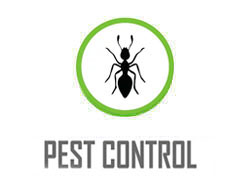Clear & Clean After Raccoon Intrusion
Once we have removed the raccoons is important to evaluate the mess they have left behind. Raccoon intrusions can result in costly home damage and unsanitary conditions. As part of our service we will document, using photos and video, the amount of damage and contamination caused by raccoons. Based on these findings, we will then propose clean up and restoration options to return your home to a safe and functional condition.
The extent of raccoon damage can range considerably from situation to situation and will depend on a number of factors, including:
- Where the raccoons were living.
- How long they have been living there.
- The time of year.
- Avoid disturbing the droppings and causing them to become airborne – a mist of water will help.
- Upon completion, thoroughly clean your clothes and tools with hot soapy water or dispose of entirely.
- Wash hands and skin thoroughly.
Raccoon Den Sites
Raccoons are crafty and are capable of making their home in a number of different locations on your property. Common den sites include attics, chimneys, garages as well as spaces below decks, sheds, porches and floating home additions. In most cases attic den sites present the greatest risk for raccoon damage and contamination as well as the most cause for concern for homeowners.
Most of the time attics are generally considered out of sight and out of mind. That’s part of the reason they’re so appealing to raccoons. Though rarely thought of, they are important to the overall comfort and energy efficiency of any home.
Raccoons are capable of causing significant damage to attic insulation. Their presence and activity inside leads to trampled attic insulation. Once the insulation has been compressed its effectiveness is drastically reduced. That means a furnace that will have to work harder to keep your home warm in winter and an air conditioner that will struggle to cool things down in summer. In the end, it all leads to higher energy bills as well as potential moisture and mould problems.
The longer raccoons are allowed to occupy the attic the more severe the damage. It is also true that raccoons cause more damage during spring and summer than they do during winter. For one, raccoons are more active during the warmer months giving them more opportunity to destroy attic insulation, baffles and ductwork. It is also the time of year when mother raccoons give birth to litters of as many as 8 babies, multiplying the possibility for damage along the way.
Raccoon Roundworm
It’s no secret that raccoons leave droppings and urine behind wherever they go. Raccoon droppings can not only cause odour issues inside the home they can also be a significant health risk. Raccoon droppings can contain a roundworm that if ingested can lead to a deadly infection in humans called Baylisascaris. Although the illness is quite rare, great care should be taken when handling, cleaning up and disposing of raccoon droppings.
Raccoons are also a common carrier of both ticks and fleas. These tiny ectoparasites can travel freely once in the confines of your home. Fleas tend to be found in their highest concentrations in and around the raccoon’s main bedding or nesting area because that’s where they spend most of their time. Once raccoons have been removed, it is important to also remove and treat the main bedding area for fleas as the fleas will often migrate out, ending up inside the home, in search of food once their host has been evicted.
Cleaning Up After Raccoons
The amount of damage will vary quite a bit from situation to situation. Cleaning up after a raccoon can range from a simple spot cleaning of a few droppings all the way up to full attic restoration. The only way to know for sure is to go where the raccoons go. Our technicians come prepared to crawl through cramped attics and tight crawl spaces to determine the level of raccoon damage and propose a customized clean up solution.
In the case of full attic restoration our technicians will safely remove all of the soiled or damaged insulation, taking care not to cross-contaminate the home. We’ll then apply a liquid bacterial digester to break down any unseen organic material before preparing the attic for blowing in brand new insulation.
No project is too big or too small and with over 30 years of experience you can trust our team to get the job done right the first time.








FOLLOW US